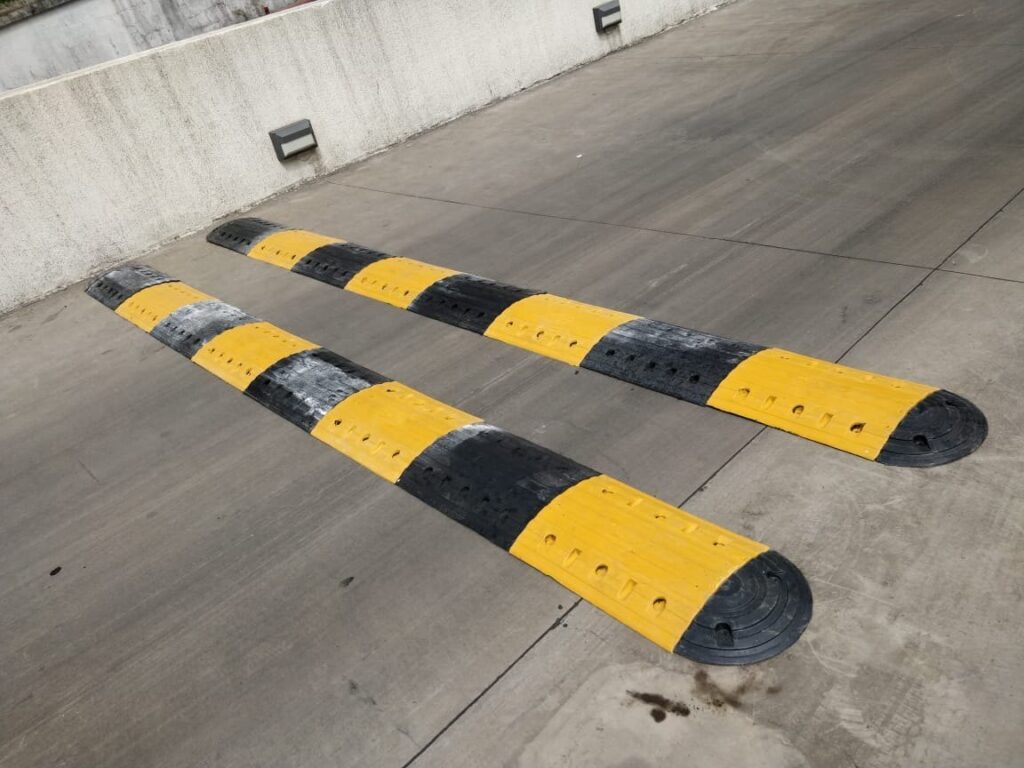Introduction
Have you ever driven down a road and suddenly had to slow down for a bump? That’s a speed breaker at work! Speed breakers, also known as speed bumps or humps, are essential road safety features designed to control vehicle speed and reduce accidents. They are widely used in residential areas, school zones, parking lots, and high-risk areas where speed control is crucial.
In this post, we’ll explore what speed breakers are, their importance, types, advantages, disadvantages, and answer some common FAQs. Whether you’re a driver, a city planner, or just curious, this guide will give you all the insights you need!
What Is a Speed Breaker?
A speed breaker is a raised portion of the road surface designed to slow down vehicles. It forces drivers to reduce speed, ensuring safer roads for pedestrians and other vehicles. These road features are commonly seen in places where traffic calming is necessary.
Speed breakers come in different shapes, sizes, and materials. They can be made of asphalt, rubber, concrete, or even plastic. The design varies depending on the road type and traffic requirements.
Why Are Speed Breakers Important?
Speed breakers play a crucial role in road safety. Here’s why they are essential:
✅ Reduce Vehicle Speed
Speeding is a major cause of accidents. Speed breakers force drivers to slow down, reducing the risk of collisions.
✅ Enhance Pedestrian Safety
In areas like school zones, residential neighborhoods, and hospital zones, speed breakers help protect pedestrians by ensuring vehicles move at a safer speed.
✅ Prevent Accidents at Intersections
Many accident happen at intersection due to high-speed driving. Speed breakers help in slowing down vehicles, giving drivers more control.
✅ Reduce Noise and Pollution
When vehicles move at a controlled speed, there is less honking, braking, and acceleration, reducing noise and air pollution.
✅ Improve Traffic Discipline
They act as psychological barriers for drivers, reminding them to be cautious and drive responsibly.
Types of Speed Breakers
Not all speed breakers are the same. They vary in design and application. Here are the most common types:
1️⃣ Speed Bumps
- These are the most aggressive type of speed breakers.
- Typically found in parking lots and private roads.
- Can slow vehicles to 5-10 mph.
2️⃣ Speed Humps
- Longer and more gradual than speed bump.
- Used in residential streets and near schools.
- Slows vehicles to around 15-20 mph.
3️⃣ Speed Tables
- A flat-topped version of a speed hump.
- Used in pedestrian-heavy areas.
- Allows vehicles to pass smoothly while maintaining a moderate speed.
4️⃣ Rumble Strips
- Small raised strips across the road that cause vibrations.
- Used on highways before dangerous curves or intersections.
- Alerts drivers to slow down rather than forcing them.
5️⃣ Cushions
- Similar to speed humps but with gaps to allow emergency vehicles to pass easily.
- Commonly used in urban areas.
Advantages of Speed Breakers
While speed breakers help improve road safety, they offer several other benefits:
✔ Effective in Reducing Speed – They compel drivers to slow down, preventing reckless driving.
✔ Low Cost & Easy to Install – Compared to other traffic control measures, speed breakers are affordable and quick to implement.
✔ Helps in Accident Prevention – By slowing down vehicles, they reduce the chances of serious crashes.
✔ Pedestrian-Friendly – Encourages safe walking environments in residential and school zones.
Disadvantages of Speed Breakers
Despite their benefits, speed breakers also have some drawbacks:
❌ Damage to Vehicles – If not properly designed or if drivers don’t slow down, they can damage cars.
❌ Traffic Congestion – On busy roads, speed breakers can lead to slow-moving traffic.
❌ Emergency Response Delay – Ambulances and fire trucks may get delayed due to multiple speed breakers.
❌ Noise Pollution – Sudden braking and acceleration can lead to increased noise, especially in residential areas.
❌ Risk of Accidents – Poorly marked or unmaintained speed breakers can cause accidents, especially for motorcyclists and cyclists.
Best Practices for Installing Speed Breakers
To ensure speed breakers serve their purpose effectively, here are some important installation guidelines:
🔹 Use Proper Signage – Install warning signs before a speed breaker to alert drivers in advance.
🔹 Maintain Proper Height & Width – Follow road safety guidelines to ensure they are not too steep or harsh.
🔹 Ensure Visibility – Paint them with bright colors and add reflectors for nighttime visibility.
🔹 Strategic Placement – Install them only in high-risk areas where speed control is necessary.
🔹 Regular Maintenance – Check for wear and tear, especially in areas with heavy traffic.
Conclusion
speed breaker are an essential road safety feature, playing a key role in reducing speed-related accidents and ensuring pedestrian safety. However, their placement and design must be well-thought-out to minimize disadvantages like traffic congestion and vehicle damage.
If you’re a driver, always be mindful of speed breakers and reduce speed in advance to avoid damage to your vehicle. If you’re a city planner, ensure proper placement, signage, and maintenance to maximize the benefits of speed breakers.
By understanding their importance and proper usage, we can all contribute to safer roads for everyone!
Frequently Asked Questions (FAQs)
1. What is the ideal height of a speed breaker?
The recommended height of a speed breaker is around 3-4 inches (7-10 cm) with a length of about 12 feet (3.7 meters) for smooth transitions.
2. Are speed breakers legal on all roads?
No, speed breakers should be installed based on road safety regulations. Highways and major expressways typically do not have speed breakers.
3. Can speed breakers damage my car?
Yes, if you drive too fast over a speed breaker, it can cause suspension and tire damage. Always slow down before crossing one.
4. How do I know if a speed breaker is approaching?
Look for road signs, markings, and reflectors that indicate the presence of a speed breaker ahead.
5. Why are some speed breakers painted in bright colors?
Bright colors, especially yellow and black, improve visibility, ensuring drivers see them from a distance and slow down in time.
6. How can speed breakers be made less harsh for vehicles?
Using rubberized materials or speed tables instead of steep speed bumps can make them more vehicle-friendly.




